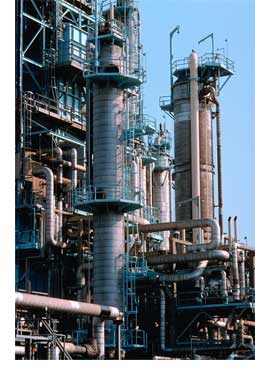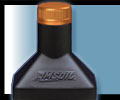|
Why synthetic?
 Because
synthetic lubricants are superior to conventional
petroleum lubricants. Petroleum lubricants are refined
from crude oil, a natural substance pumped from the
earth and containing diverse chemicals. Some of the
chemicals in petroleum oil are detrimental to the
lubrication process and to the lubricated components.
For example, some petroleum oil chemicals invite oxidation
in high temperature operations. Oxidation quickly
destroys lubricant integrity. Because
synthetic lubricants are superior to conventional
petroleum lubricants. Petroleum lubricants are refined
from crude oil, a natural substance pumped from the
earth and containing diverse chemicals. Some of the
chemicals in petroleum oil are detrimental to the
lubrication process and to the lubricated components.
For example, some petroleum oil chemicals invite oxidation
in high temperature operations. Oxidation quickly
destroys lubricant integrity.
Synthetic lubes, on the other hand,
are not refined from crude oil, but constructed from
pure chemicals selected for their ability to lubricate.
The purity of synthetic lubricant basestocks significantly
reduces lubricant oxidation, which promotes the ability
of synthetics to be used in higher tempresature applications
than conventional lubes may be and promotes their
ability to be used for extended drain intervals. In
fact, AMSOIL synthetic
lubricants are specifically formulated for extended
drain intervals.
The molecular uniformity of carefully
selected synthetic lubes promotes superior lubrication
and friction reduction, which in turn promotes superior
heat control, wear control and energy efficiency.
Molecular uniformity also helps synthetics maintain
their protective viscosity in high temperature operations,
which also promotes superior wear control.
The superior performance and protection
afforded your equipment by AMSOIL
synthetic lubricants adds up to increased productive
time and profits for you.
|



